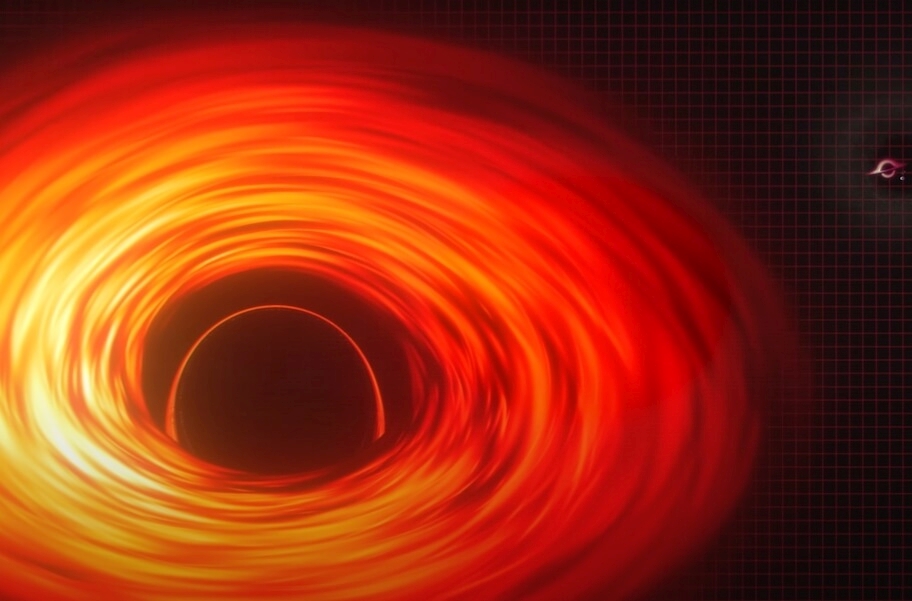
Two NASA space telescopes at the center of a distant galaxy have spotted a giant black hole that formed just 470 million years after the Big Bang, the oldest ever found, a discovery that may solve a major mystery about the origin of these cosmic monsters.
The results are published in the review Nature astronomy It seems to confirm that supermassive black holes appeared early in the universe’s history, and were not necessarily created by the collapse of dying stars.
The black hole, which was discovered by the infrared James Webb Space Telescope and the Chandra Space Telescope, which looks in the X-ray spectrum, is 13.2 billion years old.
The researchers were surprised to discover that the mass of the galaxy is approximately equal to the mass of its host galaxy, which is about 10 times the mass of the black hole lurking at the heart of our galaxy.
The oldest known black hole in Chandra and James Webb Space Telescope images (NASA/ESA/CSA/STScI)
Heavy duty perforations
Black holes are roughly divided into two categories.
The most populous group are stellar-mass black holes, which form when massive stars exhaust their nuclear fuel and collapse under their own weight. Objects in this category have a mass of about 10 to 100 times the mass of the Sun.
The second and most mysterious category is the “supermassive” black holes found in the centers of almost all galaxies, which have a mass of millions or billions of times the mass of the Sun.
The origin of these giant black holes has puzzled cosmologists, who have tried for years to clarify whether these objects gradually form by absorbing material from their surroundings, or whether they are supermassive in nature.
Researchers say that the presence of a supermassive black hole in the young universe supports the second theory.
He commented, “It is very early in the history of the universe for this giant to exist.” News agency Priyamvada Natarajan of Yale University, is a member of the team behind the study. “It’s amazing that these things already existed within the galaxy so early after the birth of the universe.
Researchers believe the supermassive black hole formed directly from the gravitational collapse of a giant gas cloud, the same mechanism that creates new stars.
This has never happened before.
The new observations support the theory that supermassive black holes form directly from clouds of gas, but they are not enough to prove that the same is true for supermassive black holes in other galaxies.
But thanks to James Webb, who is set to search further into the universe than ever before, researchers hope to discover more examples of primordial black holes soon.
As Natarajan commented: “We are waiting for a new window to open in the universe and I think this was just the beginning.”

“Avid problem solver. Extreme social media junkie. Beer buff. Coffee guru. Internet geek. Travel ninja.”





More Stories
iPad Pro: The press that crushes…human creativity – Silicon Valley takes care of it
Epic Games will give you a mysterious game
Spot Ghosts | newspaper